Nanluoguxiang (南锣鼓巷, South Gong and Drum Alley, South Luogu Lane) is a popular tourist destination located in the heart of Beijing, China. It is a historic alleyway that dates back to the Yuan Dynasty (1271-1368) and is located in the Dongcheng District. The street is approximately 800 meters long and is lined with traditional courtyard houses, shops, restaurants, and bars.
The area has been renovated in recent years to preserve its traditional architecture and cultural heritage, making it a popular destination for both locals and tourists. Visitors can take a leisurely stroll along the street, admiring the old-fashioned architecture and soaking up the atmosphere of old Beijing.
There are numerous shops and stalls selling a variety of goods, including traditional Chinese souvenirs, handicrafts, and artwork. There are also many restaurants and cafes serving local delicacies and international cuisine. The street is particularly famous for its snack food, including Beijing-style snacks, such as fried dough rings, sugar-coated haws, and jianbing (a Chinese-style pancake).
In addition to shopping and dining, visitors can also explore the many traditional courtyard houses in the area, which offer a glimpse into the lives of ordinary Beijingers in the past. Some of these houses have been converted into museums or galleries, showcasing traditional Chinese art and artifacts.
Table of Contents
- Location and Transportation
- Map of Nanluoguxiang
- Highlights of Nanluoguxiang
- Popular Restaurants and Shops
- Vlog about Nanluoguxiang
- Useful Tips Summarized from Reviews
- Attractions near Nanluoguxiang
- Explore Beijing Like A Local
Basic Information
| Estimated Length of Tour | about 2 hours |
| Ticket Price | Free |
| Opening Hours | The alley is accessible 24 hours a day. Most shops selling handicrafts, souvenirs, and local food open from 9.00 am to 10.00 pm. Bars generally open from 4.00 pm to 6.00 am the next day. |
Location and Transportation
Nanluoguxiang is in the Dongcheng District of Beijing, China. It is situated in the heart of the city, just a few kilometers from popular attractions such as the Forbidden City and Tiananmen Square. The neighborhood is easily accessible by public transportation, with several bus stops and subway stations located nearby.
Bus: Take bus No. 3, 4, 13, 42, 60, 118, 612, or tourist line 3, get off at Nanluoguxiang Stop, and you will be right at the south end of the alley.
Subway: Take subway line 6 or 8, get off at Nanluoguxiang Station, get out of the station from exit E, and you can start your tour.
Self-drive: Nanluoguxiang is a pedestrian-only area, and there is no convenient parking lot nearby. So, we do not recommend you drive yourself there.
Map of Nanluoguxiang
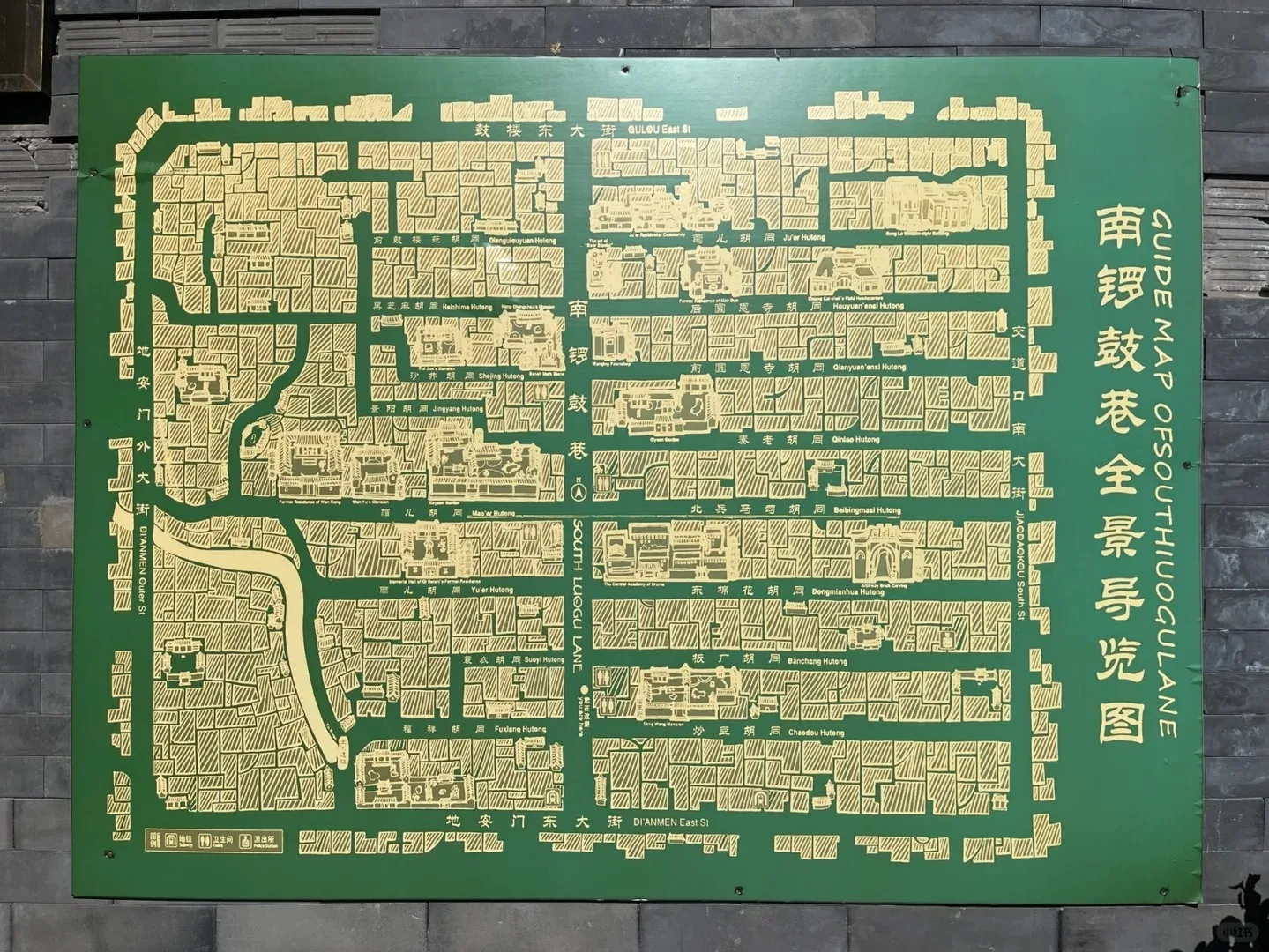
Highlights of Nanluoguxiang
Hutongs
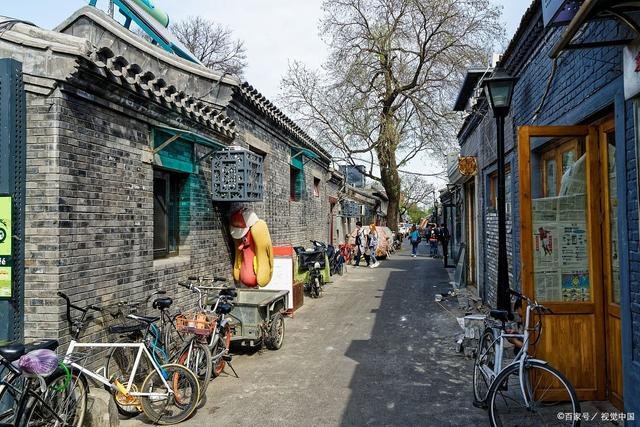
Hutongs are one of the main highlights of Nanluoguxiang, and they are an important part of Beijing’s cultural heritage. These narrow alleyways are lined with traditional courtyard houses that date back to the Ming and Qing dynasties. The word “hutong” is derived from the Mongolian word for “water well,” as these neighborhoods were built around wells that provided water for the residents.
Hutongs offer visitors a unique glimpse into the city’s history and culture, as they were once the primary living areas for Beijing residents. Walking through the hutongs, visitors can see traditional architecture, including ornate doorways and intricate roof lines. Some hutongs have been renovated into boutique shops, cafes, and restaurants, while others remain residential areas.
Local Food
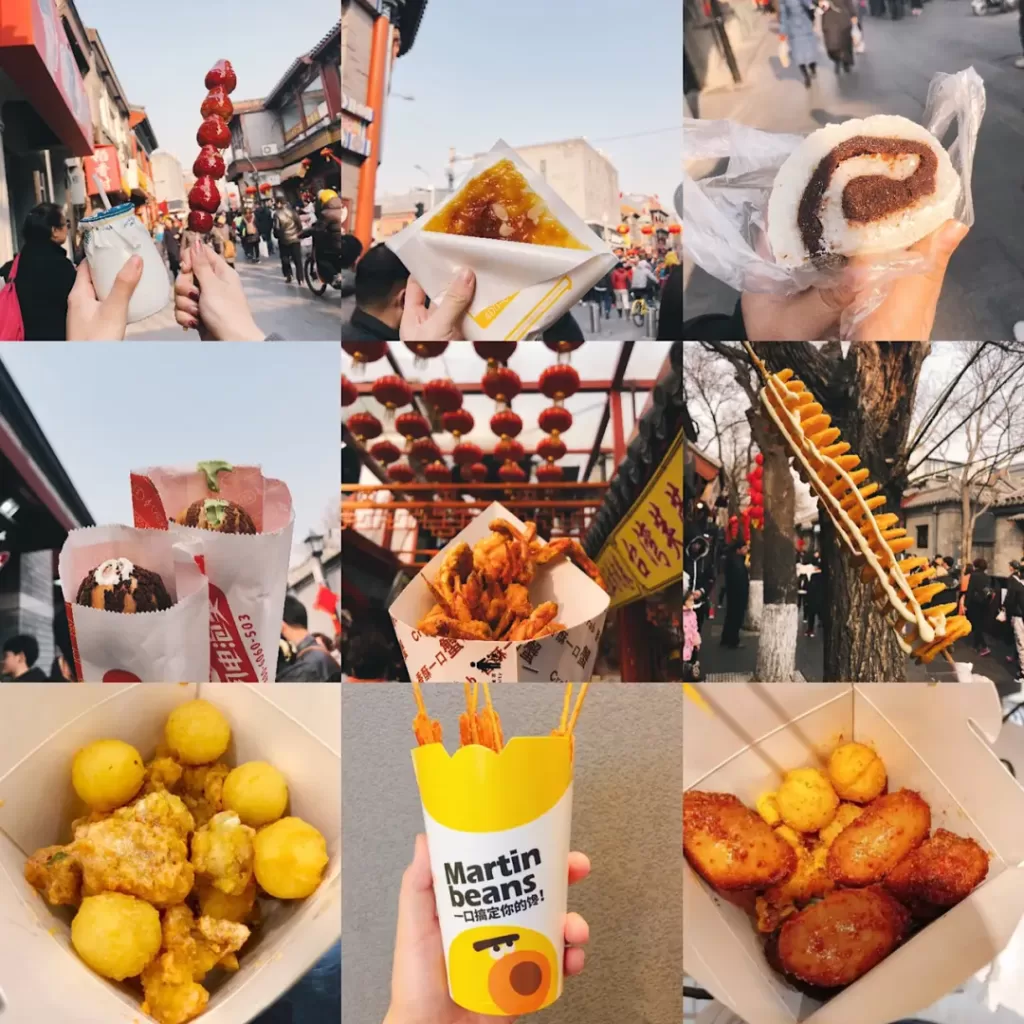
Nanluoguxiang is also renowned for its local cuisine, offering visitors a chance to sample a wide variety of delicious street food.
One of the most popular local dishes in Nanluoguxiang is “jianbing,” a savory Chinese crepe made with wheat flour, eggs, and a variety of fillings such as scallions, crispy wontons, and hoisin sauce. Another must-try snack is the “roujiamo,” a type of Chinese sandwich filled with juicy braised pork, cilantro, and pickled vegetables.
For those with a sweet tooth, Nanluoguxiang also boasts a range of dessert options, such as “tanghulu,” skewered fruit coated in a hard sugar glaze, and “liangpi,” a refreshing cold noodle dish served with a spicy sauce.
Chinese Handicrafts and Souvenirs
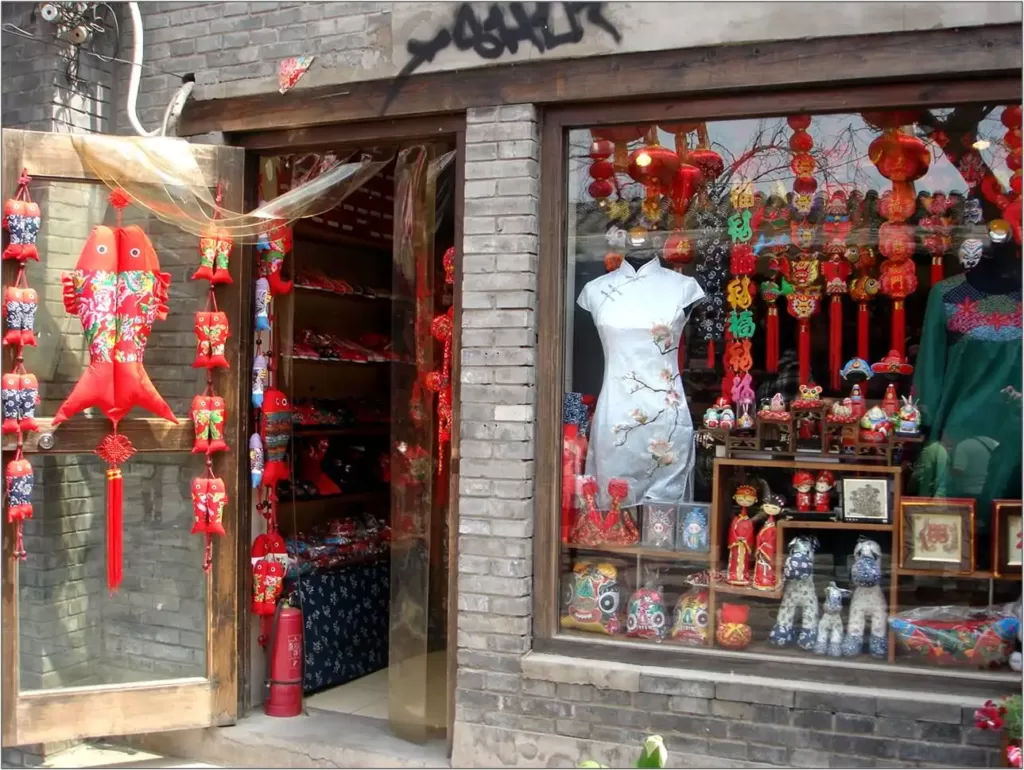
One of the most popular items in Nanluoguxiang is the “Jianzhan,” a traditional Chinese tea cup that is made by skilled artisans using a unique glazing technique. Another popular souvenir is the “Bianzhong,” a small, bell-shaped musical instrument that has been used in China for centuries.
Visitors can also find beautiful Chinese calligraphy brushes, handmade paper lanterns, intricate silk embroidery, and hand-carved jade figurines. For those looking for a unique gift or memento of their trip to China, Nanluoguxiang is the perfect place to explore and discover the rich tradition of Chinese handicrafts and souvenirs.
Bars and Nightlife
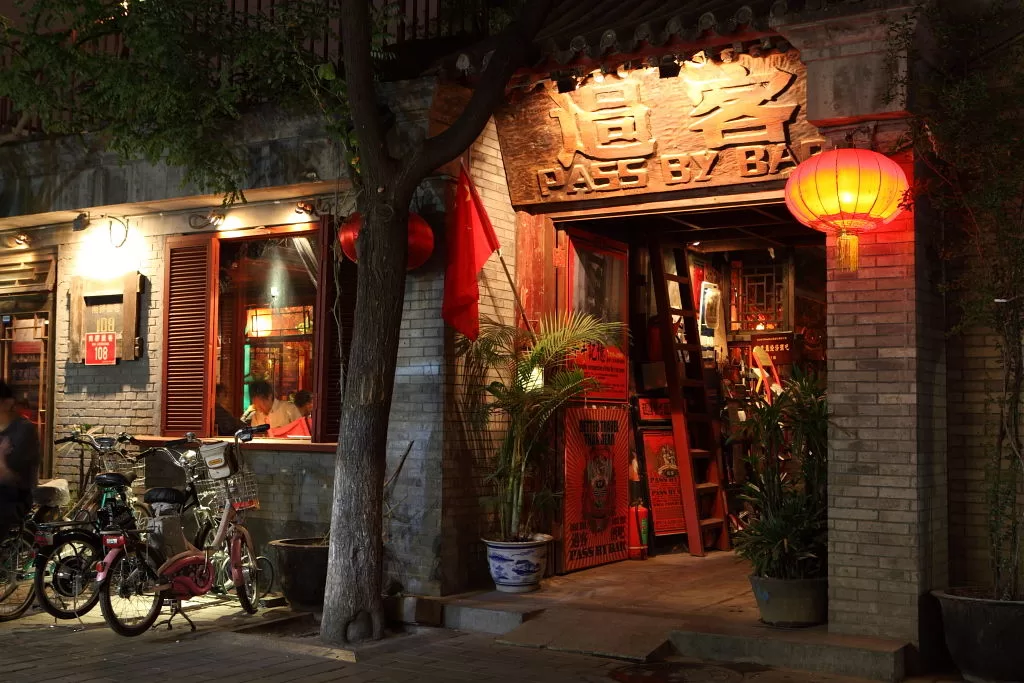
Nanluoguxiang is filled with trendy bars, pubs, and nightclubs, as well as traditional tea houses and street food vendors that stay open late into the night.
For those looking for a unique and authentic nightlife experience, Nanluoguxiang offers a range of entertainment options, from live music performances to traditional Chinese opera shows. Visitors can also enjoy the local craft beer scene, with several popular breweries located in the area.
Art and Culture
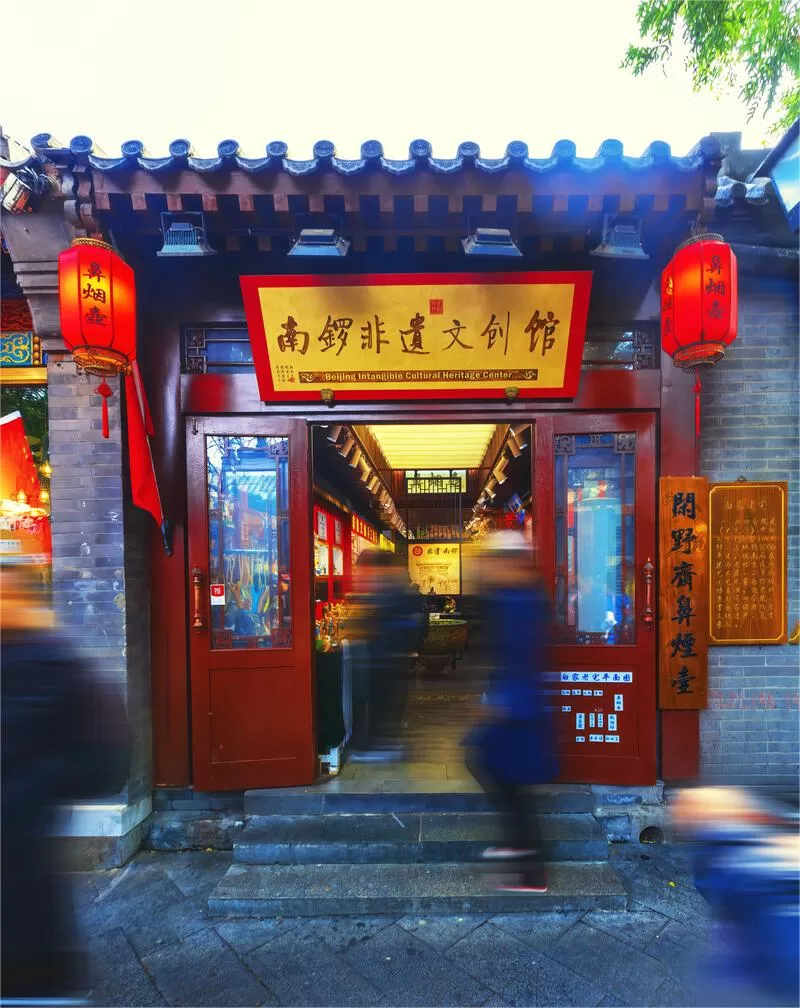
Nanluoguxiang offers visitors a fascinating glimpse into traditional Chinese art and culture. The area is filled with historic buildings and traditional hutong alleyways, many of which have been preserved and renovated to showcase traditional Chinese architecture.
In addition to its architectural heritage, Nanluoguxiang is home to a vibrant arts and culture scene. Visitors can explore the many galleries and studios that showcase contemporary Chinese art, or attend a traditional Chinese opera performance at one of the local theaters.
Popular Restaurants and Shops
Food Highlights
| Restaurant/Cafe | Menu Highlights | Recommendations |
|---|---|---|
| Churros and Ice Cream (吉事果) | Churros paired with ice cream | Chocolate-flavored churros and ice cream |
| Chimney Cakes (烟囱面包) | Sakura-flavored chimney cake | Tasty and Instagram-worthy |
| Douzhi Ice Cream (豆汁儿冰淇凌) | Mung bean-flavored ice cream | Unique local flavor, photo-worthy models in-store |
| Wenyu Cheesecake Shop (文宇奶酪店) | Double-skin Milk, Cheesecake, Milk Roll | Milk rolls (not too sweet), red bean double-skin milk (creamy and flavorful) |
| Fangzhuanchang No. 69 Zhajiangmian (防撞长69号炸酱面) | Zhajiangmian (noodles with fried bean sauce) | Hidden gem, perfectly al dente noodles, meaty sauce, free refills |
Shops to Explore
| Shop Name | Description | Highlights |
|---|---|---|
| Gudao Cat Cafe (鼓捣猫呢) | Cafe with cats, dogs, marmots | Half-hour cuddle sessions, great for animal lovers |
| Blue and White Store (蓝白商店) | Klein blue-themed store with a variety of items | Bags, accessories, game consoles, fun and unique products |
| White Rabbit (大白兔) | Specializes in White Rabbit milk candy and merchandise | Nostalgic items, childhood memories |
| Xiaoqi’s Shop (小七家) | Cultural creative store with Rabbit God merchandise | Fridge magnets, unique souvenirs |
| China-Russia Shop (中俄商铺) | Offers Russian dolls, nutcrackers, and various snacks | International goodies, extensive snack selection |
Vlog about Nanluoguxiang
Useful Tips Summarized from Reviews
Dining Recommendations: It’s not recommended to eat directly in Nanluoguxiang due to average taste and relatively high prices. Instead, consider heading to Huoguosi Snack (护国寺小吃) nearby for breakfast. It is a chain eatery offering various Beijing-style snacks.
Exploring Hutongs: While wandering through Nanluoguxiang, you’ll find numerous hutongs (alleyways) on both the east and west sides. Many of these hutongs contain former residences of famous individuals, although most are not open to the public and are now private residences.
Avoid the Main Road: Instead of sticking to the main thoroughfare of Nanluoguxiang, consider exploring the side alleys. These smaller lanes are quieter and more picturesque, retaining the traditional architectural style of old Beijing. They offer excellent opportunities for photography and provide a more authentic experience.
Metro Exit Strategy: When leaving Nanluoguxiang, if you find long queues at Exit E of the nearest metro station, consider walking a short distance to Exit F near the South Gate of Nanluoguxiang. It’s often less crowded, providing a smoother exit experience.

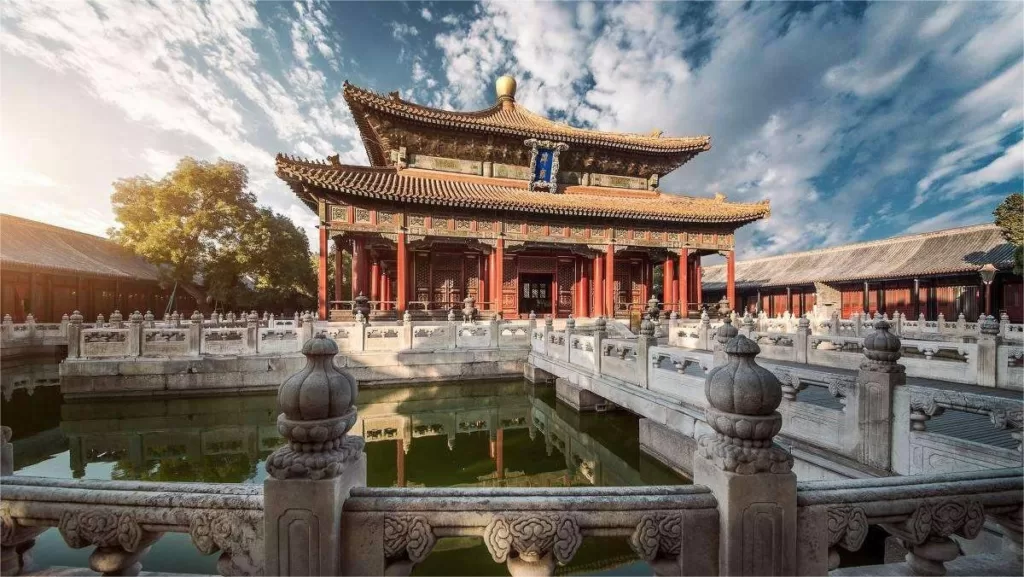
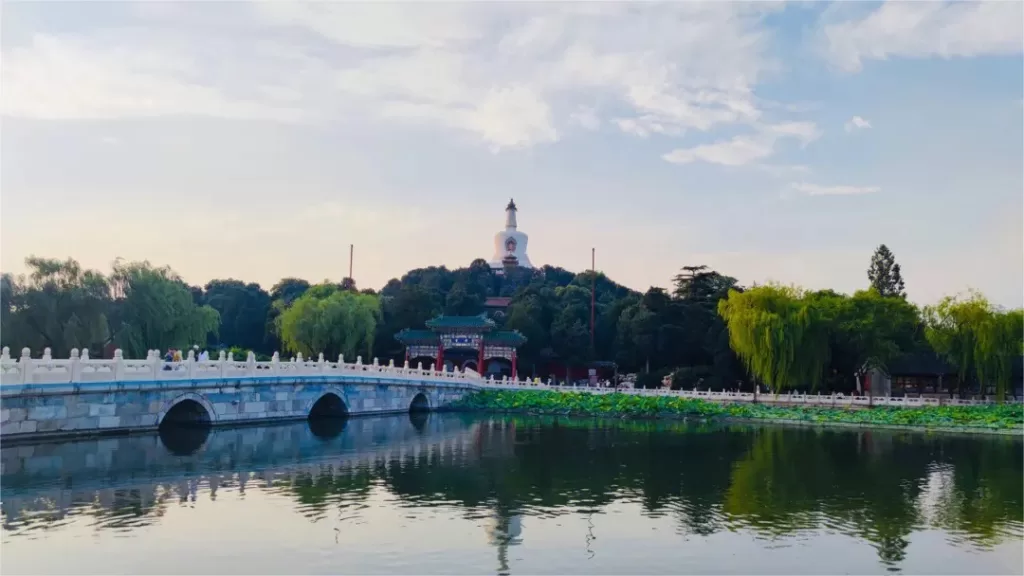
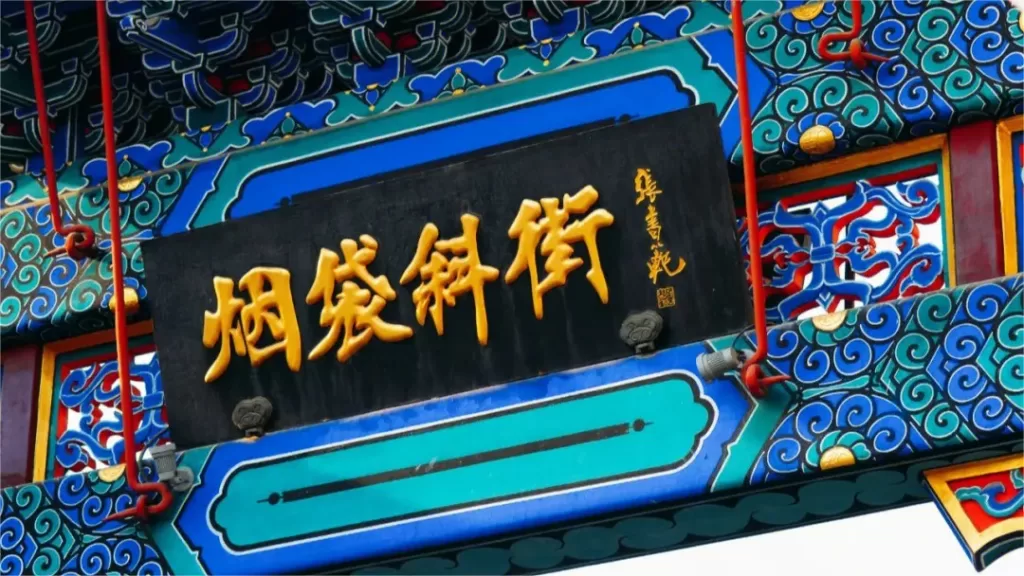
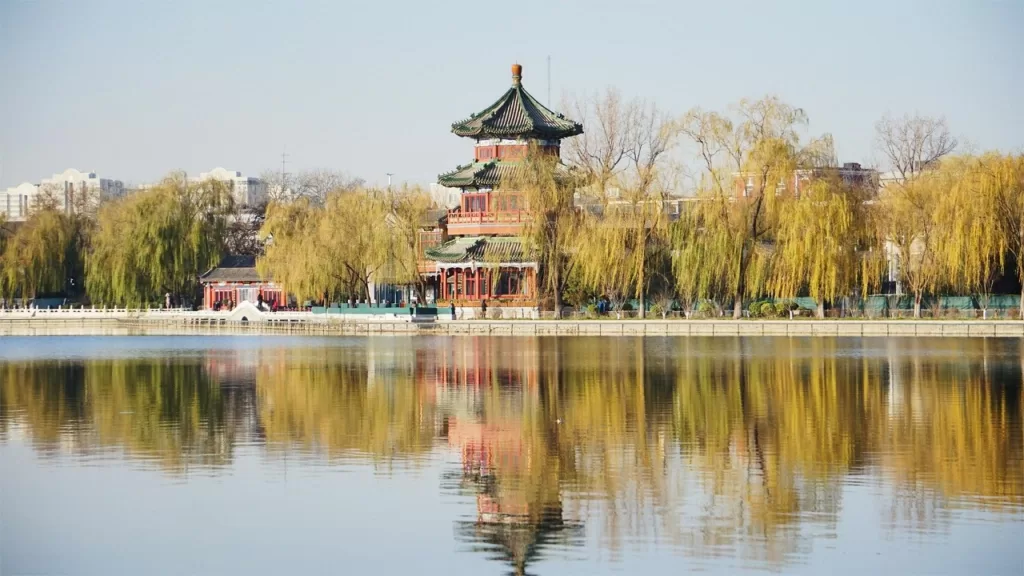


0 Comment